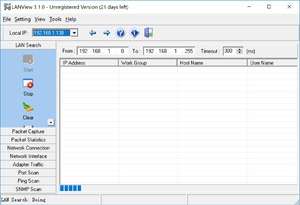

To take full advantage of NetworkView’s capabilities, further processing can be done on the adjacency matrix to calculate the network’s community structure, high-betweenness paths and suboptimal paths between residues known to participate in molecular signaling.Īside from visualization, NetworkView is also intended for quantitative analysis. If no trajectory data are available, structure networks with unweighted edges can also be generated from PDB files. This matrix is then used to create the local-contact, weighted, adjacency matrix. To calculate dynamic networks, a trajectory file containing selected atoms is processed into a correlation matrix made with the MD analysis program Carma ( Glykos, 2006) through networkSetup. The necessary data files can be generated from MD trajectories or from PDB structures. A detailed introduction to the use of NetworkView has been provided in a tutorial with data files hosted at the same location. Documentation for the NetworkView API is available on the web at. NetworkView provides an application programming interface (API) for selecting nodes and edges and then viewing the values associated with them. NetworkView is not technically tied to these programs, however, so it can be used to visualize and analyze network data generated by other means. These files can be generated by the programs networkSetup, gncommunities and subopt.

The data files are ASCII text and were designed to be human readable. Three different types of data files can be loaded into NetworkView: network, community and suboptimal path. A graphical user interface with access to the most commonly used features in NetworkView is available through the VMD menu system: Extensions/Analysis/NetworkView.

NetworkView is implemented as a Tcl plugin to VMD, which allows direct access to VMD’s powerful atomselection language and wrapper procedures for the creation and display of OpenGL objects. VMD is available for Windows, MacOS X and Linux/UNIX. NetworkView simplifies the viewing of the above network properties superimposed onto large biomolecular complexes. Once the physical network of nodes and weighted edges is generated by the program networkSetup, both optimal and suboptimal paths are calculated by subopt, and the edge betweenness and community structure are determined by gncommunities. A more detailed explanation of the network concepts and their associated algorithms as applied to dynamic networks is available in Sethi et al. These communities, which can contain both amino acids and nucleotides, are similar to structural domains but are defined by the dynamics of the biomolecules (see Fig. Using the Girvan–Newman (GN) algorithm ( Girvan and Newman, 2002), networks are divided into disjoint subnetworks called communities in which nodes have stronger and more connections to other nodes within the same community than they have to those outside the community. Major communication pathways are identified by edge betweenness, the count of all pairwise optimal paths that cross a given edge (see Fig. ( F) Subnetwork (green) consisting of the top 10% of edges with the highest betweenness values

( E) The four communities (red, gray, purple and green) that contain both protein and RNA nodes. ( D) Edges (green) bridging the interface between GluRS and the tRNA. ( C) Optimal and suboptimal paths (green) between Glu-AMP in the active site and U35 in the tRNA anticodon. Edge thickness is greater between more highly correlated nodes. ( B) Network (green) weighted by correlated motion from MD simulations. Various network visualizations for GluRS tRNA Glu Glu-AMP. As networks are increasingly used to study the function and dynamics of biological macromolecules, the informative display of network data directly onto 3D representations of biomolecules is needed ( Bhattacharyya and Vishveshwara, 2011 Csermely et al., 2010 Daily et al., 2008 Süel et al., 2002). Residues essential for molecular recognition and reaction mechanisms at different states of the system can be determined by using molecular dynamics (MD) simulations to calculate variations in contacts and displaying the resulting interaction networks and their properties directly onto the 3D structure ( Alexander et al., 2010). RNA complexes in translation ( Black Pyrkosz et al., 2010 Trabuco et al., 2010).The NetworkView extension to the visual molecular dynamics (VMD) program ( Humphrey et al., 1996) was developed to help structural biologists study allostery and molecular signaling through network models of protein
#NETWORKVIEW DOWNLOAD SOFTWARE#
The usefulness of 2D contact network visualization in the study of protein function has already been demonstrated ( Rahat et al., 2009 Sethi et al., 2009) leading to the development of software to display these networks ( Doncheva et al., 2011).


 0 kommentar(er)
0 kommentar(er)
